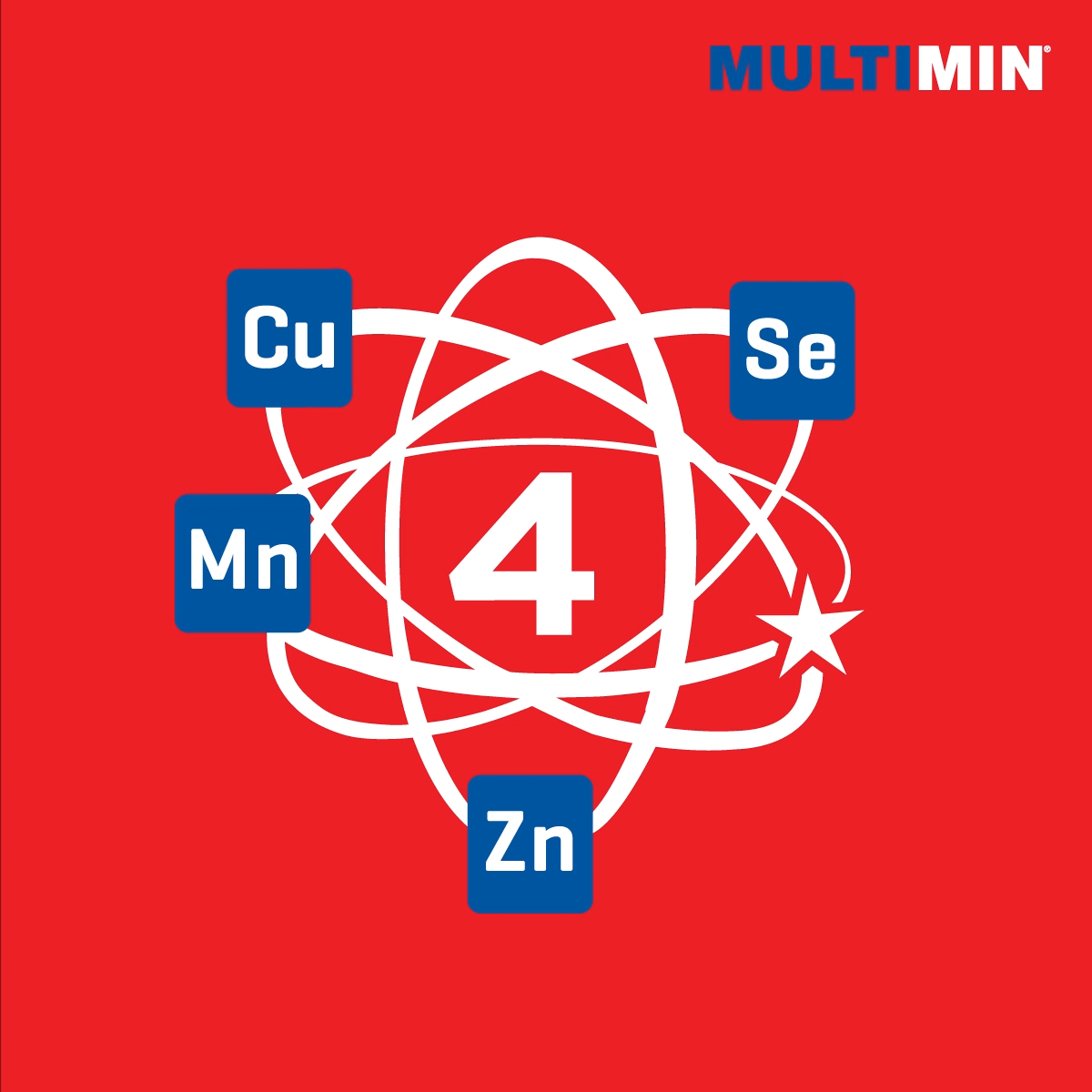Monday 4 December 2023
Orbenin LA
After being unavailable for the last few months, Orbenin LA is now back in stock and available from both the Westport and Murchison Clinics.
Friday 9 June 2023
Improving cow fertility with MULTIMIN®
The pioneer multiple trace element injection in New Zealand, MULTIMIN is a unique concept of supplementation for cattle, used by farmers throughout the country.
- Contains copper, selenium, zinc and manganese for immune support.
- Chelated formulation that is safe and tissue friendly.
- Absorbed into blood within 8 hours and transferred to the liver within 24 hours.
- Scientifically proven in New Zealand conditions to enhance reproductive performance.
Supplementing herds with trace elements
Most farmers have well-managed trace element programmes, and these work well for the majority of the year. However, there are times when the requirements for trace elements rapidly increase, often coinciding with reduced feed intake. When this occurs even well-supplemented herds can temporarily dip into a slight deficiency.These periods of high demand often lead to higher levels of disease, and sometimes short-term drops in production, growth or fertility. Calving and mating are good examples of high-stress periods where demand increases.
The role of trace elements in fertility
The reproductive system also uses many trace elements, with some of the roles only recently being discovered. For example, manganese protects the developing egg within the ovary, zinc helps to produce a healthy uterine lining and selenium is important for protecting a growing embryo.
Supported by science
In a New Zealand study1 cows were given 5 ml of MULTIMIN 4 weeks prior to calving, and again 4 weeks prior to mating. There were 2,168 cows involved in the study across 6 herds, all of which had sufficient trace element levels and continued to use their usual oral supplementation. There was a significant difference in final in-calf rates, with a 3.3% higher ICR in the MULTIMIN group overall. Recorded pregnancy losses in the MULTIMIN group were less than the control group (13 vs 25), and on average cows conceived 3.4 days earlier.
Why an injection?
Oral supplementation can be very effective for maintenance, but absorption through the gut can be slow and complicated by interference from other elements in the diet. MULTIMIN provides rapid, targeted and sustained increases in animal levels, prior to high demand periods – such as calving and mating.
When and how to use MULTIMIN
MULTIMIN should be administered to herds four weeks before mating and calving, and to bulls 12 weeks before joining the herd. MULTIMIN is administered as a subcutaneous or intramuscular injection at 1 ml/50 kg in young cattle (up to 12 months) and 1 ml/75 kg in yearlings (1–2 years) and 1 ml/100 kg in adult cattle (>2 years). MULTIMIN has nil meat and milk withholding periods.
To learn more, including the benefits of using MULTIMIN in calves, beef cattle, and deer, visit performanceready.co.nz and ask your vet.
1. D. Hawkins. (2007) The Effect of Injectable Trace Elements (MULTIMIN®) on Health & Reproduction Parameters in NZ Dairy Herds. DCV Newsletter March 2007. Registered pursuant to the ACVM Act 1997, No. A9374.
New Research – Improving Milk Quality with a Pre-calving MULTIMIN® Injection
The pioneer multiple trace element injection in New Zealand, MULTIMIN® is a unique concept of supplementation for cattle, used by farmers throughout the country.
- Contains copper, selenium, zinc and manganese for immune support.
- Chelated formulation that is safe and tissue friendly.
- Absorbed into blood within 8 hours and transferred to the liver within 24 hours.
- Scientifically proven in New Zealand to enhance herd performance.
Supplementing herds with trace elements
Most farmers have well-managed trace element programmes, and these work well for the majority of the year. However, there are times when the requirements for trace elements rapidly increase, often coinciding with reduced feed intake or changes in diet. When this occurs even well-supplemented herds can temporarily dip into a slight deficiency. These periods of high demand often lead to higher levels of disease, and sometimes short-term drops in production, growth or fertility. Calving is a good example of a high-stress period where trace element demand increases.
The role of trace elements in milk quality
There are a growing number of studies from both New Zealand and overseas showing that MULTIMIN® can boost immunity and reduce disease. A great example of this is in calves, with local research showing that we can improve the function of white blood cells, and halve death and disease with an injection at birth. In theory increased white blood cell activity should also have a positive effect in adult cattle, particularly in diseases where we know this is an important part of the immune response, such as mastitis.
Supported by local science
1,700 cows across 4 herds were enrolled in a recent New Zealand study1. Half were injected with 5 ml of MULTIMIN® 14-28 days before calving, at the same time as they were given an anti-scours vaccine. All herds were fully supplemented with oral trace element mixes, with blood tests confirming copper and selenium levels were well within normal ranges on the day of treatment.
Results showed a halving of clinical mastitis in the first 30 days after calving (from 4.2% down to 2.0%). The proportion of cows with subclinical mastitis was also reduced by 25%.
There was a low level of disease in these herds, and trace element levels were within normal ranges, reflecting that these were well managed farms. This reinforces the importance of trace elements in supporting the immune system when stressful events increase demand, even where disease is well controlled and no deficiencies are apparent. It also means that we potentially have another tool in the kit to make gains in milk quality on even the best performing farms, which would further reduce reliance on antibiotics.
Return on investment for MULTIMIN® injection pre-calving
It’s important to make sure there is a strong enough economic effect to justify the investment. Using the SmartSAMM Gap Calculator we can estimate the return in a 400 cow herd if the same results seen in the trial are achieved. Assuming 400kgMS/cow and a conservative $6.50 payout, the benefit is over $7,000 – a return on investment of about 4:1.
In summary, this study gives us an economically viable option to make improvements in milk quality on almost all farms.
To learn more, including the benefits of using MULTIMIN® in calves, and in your herd pre-mating, visit performanceready.co.nz and ask your vet.
- Virbac data on file. Registered pursuant to the ACVM Act 1997, No. A009374.






Thurs 4 May 2023
Most farms are enjoying good pasture growth this autumn. This is helping milk production but it is causing a few animal health issues. Some areas have experienced bloat from lush growth. We have had farms with low magnesium as the grass is very much like spring growth which will be low in magnesium. Be careful with transportation of lactating culls, read the Dairy Transport Preparation article below. If you think your cows are at great risk consider giving cows a calcium bolus just before they are trucked. Discuss with your vet if you think this could be helpful for your stock.


Last Updated on July 24, 2024